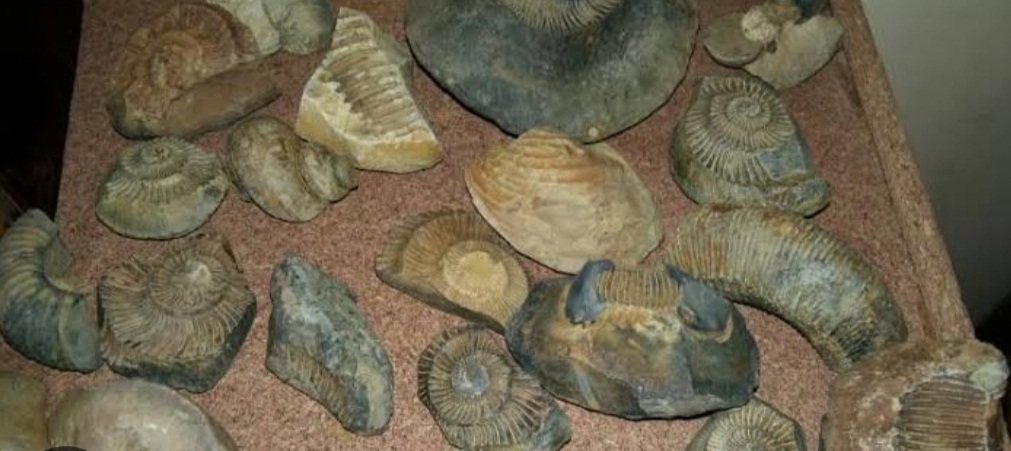Rimkhim-Sumna: A Geologist’s Delight
‘Nearly every great discovery in science has come as the result of providing a new question rather than a new answer.’ Paul .A. Meglitsch
Post by Colonel Satish Singh Lalotra

A combination of toughness and fascinating beauty with captivating surroundings, full of peace and tranquility all over, the mighty Himalayas attains a unique and significant status amongst the mountain chains in the world. Besides attaining the moniker —‘Roof of the world ‘or the proverbial ‘Third pole’ beset with majority of ‘Eight thousanders’ (more than 26,500 feet) peaks like the Everest, Kanchenjunga, Annapurna in the comity of mountaineering parlance, these mountains are choc-a-bloc with exotic beauty, unparalleled varied wealth of natural resources to include a multitude of flora and fauna, minerals and crystal clear water.
The quintessential Himalayas thus have been the cynosure of saints, devotees, religious people, astrologers, astronomers, nature aficionados, photographers, sportsmen tourists, archeologists, anthropologists, zoologists, botanists, experts of medicines, Seri culturists, and defence and security people due to its singular capability of providing something or the other to all the above mentioned in whatever little quantity .
Quite naturally, the vast treasure of varied rocks and minerals occurring in the Himalayas had been attracting the attention of geologists too since over a century. Geologists from all over the world in all fields of specialization have contributed immensely on large variety of themes in different parts of Himalayas.
In India the Himalayas extends from the Indus River in the west to Brahmaputra River in the east. Its extent from south to North is about 280 km and from west to east is about 2400 kms. In India, it limits within 72 degree east to 96 degree longitudes and 26 degrees N to 36 degree to N.
The general strike of the Himalayas is NW-SE. The present article of mine focuses on a particular region of Garhwal Himalayas which I was drawn to in the early 90s while on a patrol from Malari all along the River ‘Girthi Ganga’ on way to our final patrolling point ‘Sumna’ just short of the contentious area of ‘Barahoti’.
At ‘Girthi Dobala’ where I had spent a considerable time the previous year of 1991, this time the patrol had its mandate to touch Sumna and return back taking the south bank of River Girthi Ganga back to Malari.
Surprisingly on reaching Sumna after a straight climb from ‘Girthi Dobala’ we found encampment of doctoral students from the ‘Department of earth sciences’ university of Roorke who had come there for their geological field investigations in this ‘Sumna- Rimkhim’ section. Since it was September with no trails of retreating monsoon in sight, the area had become quite slushy with the local Bhutia and their Yaks too milling around. Short on time, I had some time to interact with these students who willingly parted with some work information that calls for some real stupendous and painstaking field work in such a hostile terrain. The first thing which you notice on reaching sumna is the changed texture of the terrain that is visible on its mountain sides giving a look of pre-historic times .Certain portions of the mountains carried a view as if they wore the imprints of sea waves. That is quite queer in such a wind-swept high altitude region of Garhwal Mountains. One curiosity led to another when I was informed that the area where we were interacting with the research fellows formed part of ‘Tethyan Garhwal’ or ‘Tethys Himalayas’ ,which was supposed to be under the pre-historic ‘Tethys sea’ also called as the ‘Tethys ocean’.This was a pre-historic ocean during much of the ‘Mesozoic era and early ‘Cenozoic’ eralocated between the ancient continents of ‘Gondwana’ and ‘Laurasia ,before the opening of the Indian and Atlantic oceans during the Cretaceous period.
The term ‘Tethys Himalayas’ was introduced for the first time in 1935 for the fossiliferous occurrence in this part of Garhwal Mountains. Apparently the team of doctoral level students were busy in carrying out a series of palynological tests for processing rock samples.
Palynological tests are primarily conducted on dust particles or other remnants of ‘particulate matter’ that come to settle down on the rock surfaces or the mountain sides which a geologist carries out to study in order to ascertain the life, environment and energetic conditions that produced them.
It is a science that studies contemporary and fossil remains including pollen, spores, orbicules together with particulate organic matter(POM) in sedimentary rocks, which ‘Sumna’ was abound with. On my query if this area of Sumna was submerged under sea, these students were quick to reply that way back in 1974 and even in 1989 Geological field surveys had confirmed the presence of remains of trilobite and some minute languid brachiopods in general area Sumna and Rimkhim.
Now for a layman a ‘trilobite’ and a ‘Brachiopod’ are a kind of early animals of which our knowledge of them has been gained from the study of their fossils ,usually the hard impressions left of their shells after burial in sediment that subsequently hardened into a rock. That was proof enough of this area of Garhwal mountains once submerged in the pre-historic ‘Tethys ocean millions of years ago.
Since I had studied botany and zoology till my graduation level I could make out the terminologies being exchanged between us, though period of time lapse had rusted my knowledge a little bit of these early animals of our planet. AS per the team of experts the Garhwal part of the ‘Tethyan zone of the Himalayas refers to the zone extending from ‘Gamsali ‘ in the west to ‘Ghatmila Dhura’ in the east and from Malari in the south west to Rimkhim and Sumna/ Shalshal La pass on the LAC.
Like many early invertebrate animals (born without a spinal cord) living today, including crustaceans, spiders, and insects, trilobites were Arthopods, belonging to the phylum Arthopoda. In addition to the above, first fossil floral occurrence was recorded in the year 1974 of Branched algae in this general area of Sumna –Rikhim.
The Litho-strategraphic units (group of rocks identified as per their formation, age and type of formation) erected and designated by earlier workers put the age of these rocks at Sumna–Rimkhim in the category of Cambrian to Silurian age.
As per Geological studies, Cambrian age and Silurian age corresponds to approximately 538.8 million years ago and ending at 485.4 milion years ago. As per certain doctoral research papers as late as late 90s twenty genera and sixty seven species of acritarchs have been identified in general area of Sumna-Rimkhim.
Acritarchs are what is known as a polyphyletic group, meaning that they probably include some organisms that are similar but not closely related to each other. In addition to the above there have been a preponderance of traces of Boron (Ba) element in many of the rock fossils found in the Sumna –Rimkhim section of this Tethys Himalayan region of eastern Garhwal.
Traces of Boron lend credence to the fact that here thrived a very active marine life. I was reminded of this area having a geological importance way back in 1991 while still in service and was prompted to go once again along the Girthi Ganga axis which has now I believe a motor able access from Malari. But then time being at a premium during my 2019 visit to Badrinath temple, I thought discretion was the better part of a road journey to such a remote area and hence shelved the plan.
But the range of Himalayas never ceases to surprise even the most of disinterested of a traveller. For every traveller of diverse tastes this range has got something in its innermost recesses to keep you occupied.
(The writer is a retired army officer and available on his email.slalotrta4729@gmail.com)



